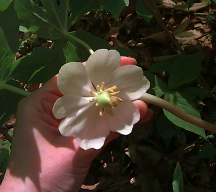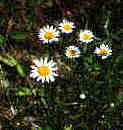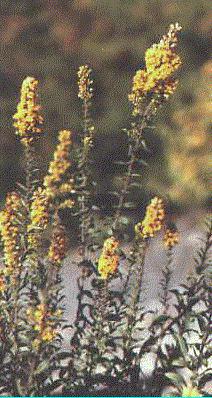
Mayapple


Mayapple leaves grow to a diameter of 1 foot. Leaves rise on a separate stem. Parts of the flowers are followed by strange, lemon-likefruits or apples which are edible if you do not swallow any of the seeds which they contain. The leaves, seeds, and roots are poisonous, however,infusions of this plant have been used for medicinal purposes.
In some areas, this plant grows in colonies so dense that the ground is hidden fromview. This plant is often called "mandrake".
Queen Anne's Lace

Queen Anne's Lace originated overseas and is hated by many people as a troublesomeweed. Early settlers developed the common garden carrot from an Asiaticform of this plant. When crushed, the leaf of this plant gives off a carrot odorwhen crushed. This wild plant's roots are edible, but there is danger in confusing it with many other poisonous plants, such as poison hemlock.
Queen Anne's lace grows to a height of 1 to 5 foot. Flowers are creamy whitewith flat-top compound umbels with feathery green collars.
Oxeye Daisies

The oxeye daisy was once a native of Europe, but now resides in the LaurelLake area as well. It produced an acrid juice. The oxeye daisy is not eaten by cattle andother animals. It has ruined pastuerlands. Long ago, crushed leaves of the oxeyed daisy were used to tread bruises. The juice was also thought to be good forgout.Goldenrod

Goldenrod grows in the Laurel Lake area in different varieties. The most commonvariety is tall goldenrod. Tall goldenrod grows to a height of 8 feet. It has a golden composite flower. Many flowers appear in a cubelike cluster. Goldenrodprefers thickets, fields and woodlands to grow.







